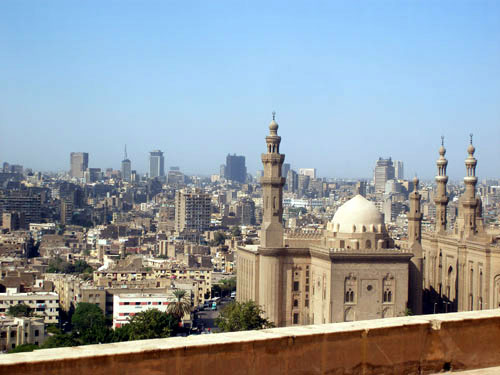Semester at
Sea Fall
2006 Voyage 
- Home Page
- My bio
- Comparative
Global
Cities Project:
Crossing the Globe: Cairo versus Dubrovnik
- China: O Boy The Olympics
- Croatia Leaves Transnationalism
in the Dust
- Japan's Battle with
Transnationalism
- Today's Turkey
- Egypt: From Fox Meadows to
Spring Valley
- Hong Kong: Extreme Opulence
Under Extreme Poverty
- Open Letter
Crossing the Globe: Cairo versus
Dubrovnik
By John Overington
Introduction
The following is an analysis of two field reports written with the intention of describing and understanding the relationship that transnational and vernacular have in modern global cities. The assignment required the comparison of two global cities, one from the Mediterranean region, and one from the larger Asian/Middle Eastern region. This analysis will reveal two very different responses to the growing influence of transnationalism on the rooted vernacular in these two different regions of the world. As will be demonstrated, the Croatian population has been able to fend off the transnational influence on their towns on the Dalmatian coasts, while there is a much different situation in
 The
first report
is on a city that has been able to escape most of the transnational
influence
that plagues so many cities today. This
report concerning Croatia
The
first report
is on a city that has been able to escape most of the transnational
influence
that plagues so many cities today. This
report concerning Croatia The
struggle between
transnationalism and vernacular has had a much different result in
The
struggle between
transnationalism and vernacular has had a much different result in Field
Reports
in the Croatian city of Dubrovnik:
Here is the link for the second case study that describes the ways in which
transnational actors are changing consuming in Cairo.
From Fox Meadows to Spring Valley
Analysis
One integral part of this assignment was to include the writings of much more accomplished urban anthropologists and their analyses of situations that I experienced. Unfortunately, the reading provided did not exactly speak to the experiences I had while in port, so I hope to use them to frame the situations that I did experience. By understanding the climate in which my experiences occurred, one might better analyze my observations. This is not to say that the articles were irrelevant to the study of urban anthropology, just that many proved difficult to relate to my limited experiences while in each country.
To be sure, the
communities I am discussing
in relation to
In the case
of
Croatian
architecture has remained intact regardless of transnational
actors, and
this architecture speaks a lot to the culture and vernacular of cities
like
Conclusions
The
overpowering theme that I have tried to relate in this exploration of
global
cities is that vernacular has an uphill battle to keep itself free from
transnationalism. Transnational actors
and the advanced tactics they use to sell their products have billions
of
dollars and man power to transform every city and citizen into
consumption
machines. Transnational companies are out
to
make the largest margins of profit ever seen, and have the ability to
employ
many ways to convince populations that a product is needed. The two cities we have explored here have
been oppositely affected by transnational actors in the last century. First, we learned that the city of
course home page